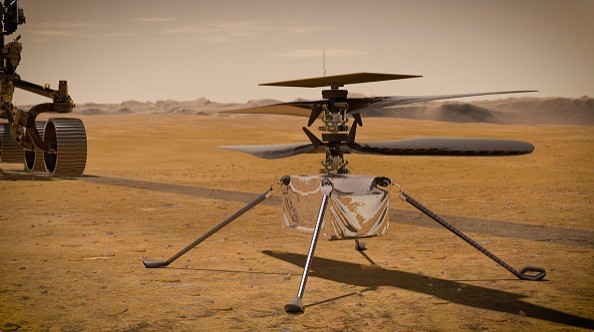Is there life on Mars?
The Red Planet has been a constant subject of interest for scientists and common people as SpaceX looks forward to colonizing Mars in the future. For NASA's Mars Life Explorer, it will have to dig deep to resolve this long-standing question.

Top Priority: Finding Life on Mars
The most current planetary science decadal survey, a report provided by the U.S National Academies of Sciences, Engineering, and Medicine in April, earned resounding support for the deep-diving MLE, which would concentrate on searching for clues of existing life on Mars.
The major priorities for planetary science research over the next ten years are outlined in decadal assessments of the field, and at the top of the list is searching for life on Mars.
The paper recommends Mars Life Explorer as its next priority medium-class mission for the Mars Exploration Program following the Mars Sample Return mission's peak-spending phase.
If signs of extant life are there, the Mars Life Explorer might be able to find them in ice forms near the surface of the Red Planet. As planned, the lander would burrow into that ice, take samples, and conduct analyses on them from the actual site.
MLE might launch in the 2030s, touch down within a vertical meter (3.3 ft) of Martian mid-latitude ice, drill for samples up to 6.5 feet below the surface, and examine those samples on the spot, according to Space.com's report.
According to Philip Christensen, a professor in the School of Earth and Space Exploration at Arizona State University and co-chair of the National Academies' steering group for the decadal study, NASA's Mars program has been successful, making it a "scientific success story."
Read also : NASA Perseverance Rover's MEDA Sensor Damaged by Mars Rocks-Reducing Its Efficiency! Can It Still Be Used?
"Rose To The Top"
When the panel considered mission concept studies, the decadal study's recommendation to launch the MLE mission "rose to the top," according to Christensen, who spoke to Space.com. The mission, he claimed, made the greatest sense to the decadal committee.
The sample return program, a joint NASA-European Space Agency effort to transport samples gathered by NASA's Perseverance Mars mission to Earth in 2033, could perhaps function in parallel with the MLE lander, according to scientists.
Space.com further noted that Amy Williams, an assistant professor of geological sciences at the University of Florida in Gainesville, is one of the main scientific advocates for MLE.
Williams noted that since the Viking 1 and Viking 2 landers' search for extant Mars life in the late 1970s and early 1980s, NASA has gone a long way to get to its current Mars Exploration Rovers: Curiosity and Perseverance.
If the mission is approved by NASA, Perseverance and Curiosity's earlier discoveries will surely help MLE to accomplish its goals.
This article is owned by Tech Times
Written by Joaquin Victor Tacla

![Apple Watch Series 10 [GPS 42mm]](https://d.techtimes.com/en/full/453899/apple-watch-series-10-gps-42mm.jpg?w=184&h=103&f=9fb3c2ea2db928c663d1d2eadbcb3e52)


